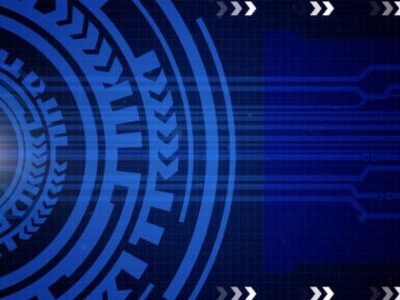Everyone loves the idea of smooth compliance, but reality demands structure, patience, and precise execution. For contractors aiming to align with NIST 800‑171 and pass their CMMC Level 2 Certification Assessment, preparation is everything. From outlining the boundaries of Controlled Unclassified Information (CUI) to documenting every policy trail, the road to certification is more like a layered blueprint than a checklist.
Baseline Gap Mapping to Reveal Control Shortfalls
Before any serious CMMC Level 2 Assessment begins, a contractor needs to understand where they currently stand. This step, known as gap mapping, involves running a deep analysis against the 110 required NIST 800‑171 controls to spot what’s missing, misaligned, or misunderstood. A reliable CMMC consulting process usually includes both document reviews and technical interviews during this stage to uncover silent shortfalls, such as missing multi-factor authentication for privileged users or inadequate audit log retention.
This exercise doesn’t just show the weaknesses; it tells the story of the organization’s readiness. Gaps are usually scored or tiered to help prioritize remediation tasks. Teams using a clear CMMC assessment guide can easily visualize which practices are fully implemented, partially done, or not started at all. The goal isn’t perfection right away; it’s clarity. Knowing what you don’t have is far more powerful than assuming you’re ready when you’re not.
Finalizing the System Security Plan with NIST Traceability
Once gaps are mapped, it’s time to bring the System Security Plan (SSP) into focus. An SSP isn’t just a required document; it’s the beating heart of the CMMC Level 2 Certification Assessment. It outlines every system, policy, and practice relevant to protecting CUI and must include traceability back to each of the 110 NIST 800‑171 controls. The better your SSP reflects the real state of your environment, the smoother your assessment journey will go.
Finalizing this plan means more than just pasting policies into a document. Each section should identify system components, control implementation status, exceptions, and inheritance from cloud providers or MSSPs. It also ties in with assessment scoping, helping define which assets, people, and facilities fall under review. An SSP filled with vague references or misaligned justifications could create more confusion than clarity, especially during a live CMMC Certification Assessment.
Evidence Artifact Collection to Support 110 Control Assertions
Evidence is the currency of trust in a CMMC Level 2 Assessment. Auditors need proof, not promises, that your organization has implemented the necessary controls. That’s where evidence artifact collection comes in. This process requires gathering logs, screenshots, configurations, policies, SOPs, and user access lists that validate each of the 110 NIST 800‑171 requirements. Without organized and labeled evidence, even well-executed controls may be missed during the audit.
One often overlooked trick is to map each artifact directly to its respective control requirement and system component. This makes it easier for assessors to follow the paper trail and verify compliance. Quality CMMC consulting services will stress the importance of metadata dates, usernames, timestamps, and implementation status within artifacts. It’s not about overwhelming auditors with files; it’s about giving them clean, clear proof that your security program is not just theoretical.
Establishing Clear CUI Boundary Definitions for Scope Accuracy
If the scope is wrong, the assessment results won’t mean much. That’s why defining your CUI boundaries where CUI lives, travels, or is processed is essential. Whether you’re managing IT infrastructure in-house or using external service providers, the CUI boundary determines which assets fall within the assessment and which can be excluded. This scope clarity directly impacts how many controls apply and which systems need to be locked down.
A well-defined boundary includes data flows, asset inventories, virtual machines, email accounts, and even physical access to facilities. Many contractors overlook how CUI flows across departments or how remote users may stretch the security perimeter. A reliable CMMC assessment guide will advise treating CUI like a “data story” and following it across systems from ingestion to disposal. The tighter your story, the easier it is to defend your scope during an assessment.
Conducting Internal Dry Run Assessments to Validate Control Coverage
Before auditors arrive, dry-run assessments simulate the real thing. These practice runs are vital for testing readiness, refining documentation, and identifying controls that look great on paper but don’t hold up in practice. Whether run by internal security teams or external CMMC consulting firms, these simulations give stakeholders a chance to walk through policies, demonstrate systems, and respond to typical auditor questions.
Dry runs also spotlight operational weak points, such as inconsistent control enforcement or team members unsure of their roles during an audit. They help validate the completeness of your SSP, the availability of artifacts, and the maturity of your internal processes. Contractors often realize during these assessments that they’re either overestimating their control implementation or underdocumenting it. That course correction is what makes dry runs so powerful.
Reasons SSP Versioning Ensures Audit Traceability
Version control may seem like an administrative chore, but during a CMMC Level 2 Certification Assessment, it’s the foundation of audit traceability. Keeping a well-managed history of SSP changes, who updated what, and when, shows auditors your compliance program isn’t static. It evolves. This type of versioning builds credibility and demonstrates your team actively maintains security documentation as environments, threats, or staff change.
A clean version history also helps avoid confusion. If an assessor reviews one SSP version while your team references another, it can derail the audit. With proper versioning, including date stamps and change logs, you ensure everyone is speaking from the same page, literally. It also gives you something to point back to during future assessments or reassessments as evidence of compliance maintenance over time.
What Makes Early Stakeholder Alignment Crucial Before On-Site Reviews
The earlier stakeholders are aligned, the fewer surprises during your on-site CMMC Certification Assessment. Everyone from IT leads to HR, operations, and external vendors must understand their role in compliance. Early alignment ensures that access to data, systems, facilities, and documentation isn’t delayed when assessors arrive. It also helps technical teams prepare for live demonstrations and walkthroughs of implemented controls.
This alignment isn’t about sending a calendar invite the week before. It’s about engaging key people from the moment your CMMC assessment guide is drafted. Briefings, expectations, and mock Q&A sessions prepare staff for real-time auditor questions. You can also surface and solve access issues in advance, like expired credentials or missing documentation. Clear communication channels and defined responsibilities let your organization run the assessment like a well-oiled machine.
If you want morе еxciting contеnt, visit. Globallyviz.com














Comments